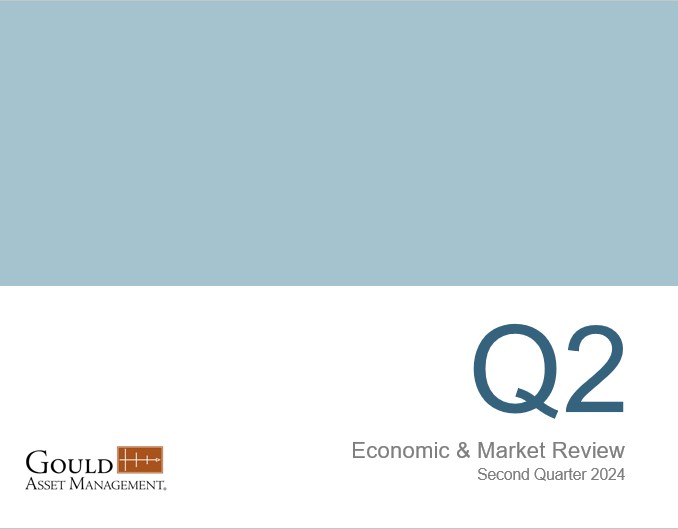by The Gould Asset Management Team
Note: This post is an excerpt from Gould Asset Management’s Economic and Market Review for the Second Quarter of 2024. The excerpt is posted here for the benefit of our blog subscribers.
Large-Caps Lead the Way in Q2 as Markets Continue Upward
US mega-cap tech stocks and emerging markets led the charge in the second quarter despite moderating economic growth, interest rate uncertainty, and geopolitical tensions. Investor optimism for artificial intelligence (AI) remains high, with strength in the large-cap technology sector pulling broad-based indexes higher. Meanwhile, international developed markets and mid and small cap stocks lagged.
US large cap stocks, as represented by the S&P 500 index, advanced 4.3% in Q2, with tech and especially AI-related stocks leading the charge. Investors also grew more optimistic about Fed rate cuts later this year, providing some added tailwind amid easing inflation. Year-to-date, US large cap stocks have risen 15.3% and are up nearly 25% over the past 12 months.
In addition to the Technology sector (up 8.8% in Q2), Communication Services (up 5.4%) also performed well on the quarter, as did Utilities (up 4.6%). Year-to-date, Tech has been the clear leader (up 18.0% in 2024), followed by Financials (up 10.2%), though the latter pared gains in Q2.
US mid and small cap stocks lagged large caps by a wide margin in Q2, with the Wilshire 4500 stock index falling 3.4%, putting year-to-date gains at a modest 3.9%. Investors are concerned that any potential economic slowdown might weigh heaviest on smaller companies, and AI-related gains have mostly bypassed smaller capitalization stocks.
International developed and emerging markets returns diverged in Q2, with the MSCI EAFE (developed markets) stock index falling 0.2% (up 5.8% year-to-date), while the MSCI Emerging Markets index rose 5.1% (up 7.7% year-to-date). A rebound in Chinese stock prices fueled emerging markets, while signs of economic slowing weighed on international developed stocks.
Market volatility rose briefly in April, with the VIX volatility index reaching a high of 19, but quickly subsided in May and June, finishing the quarter near 12.
To continue reading, please see our entire Economic and Market Review.

